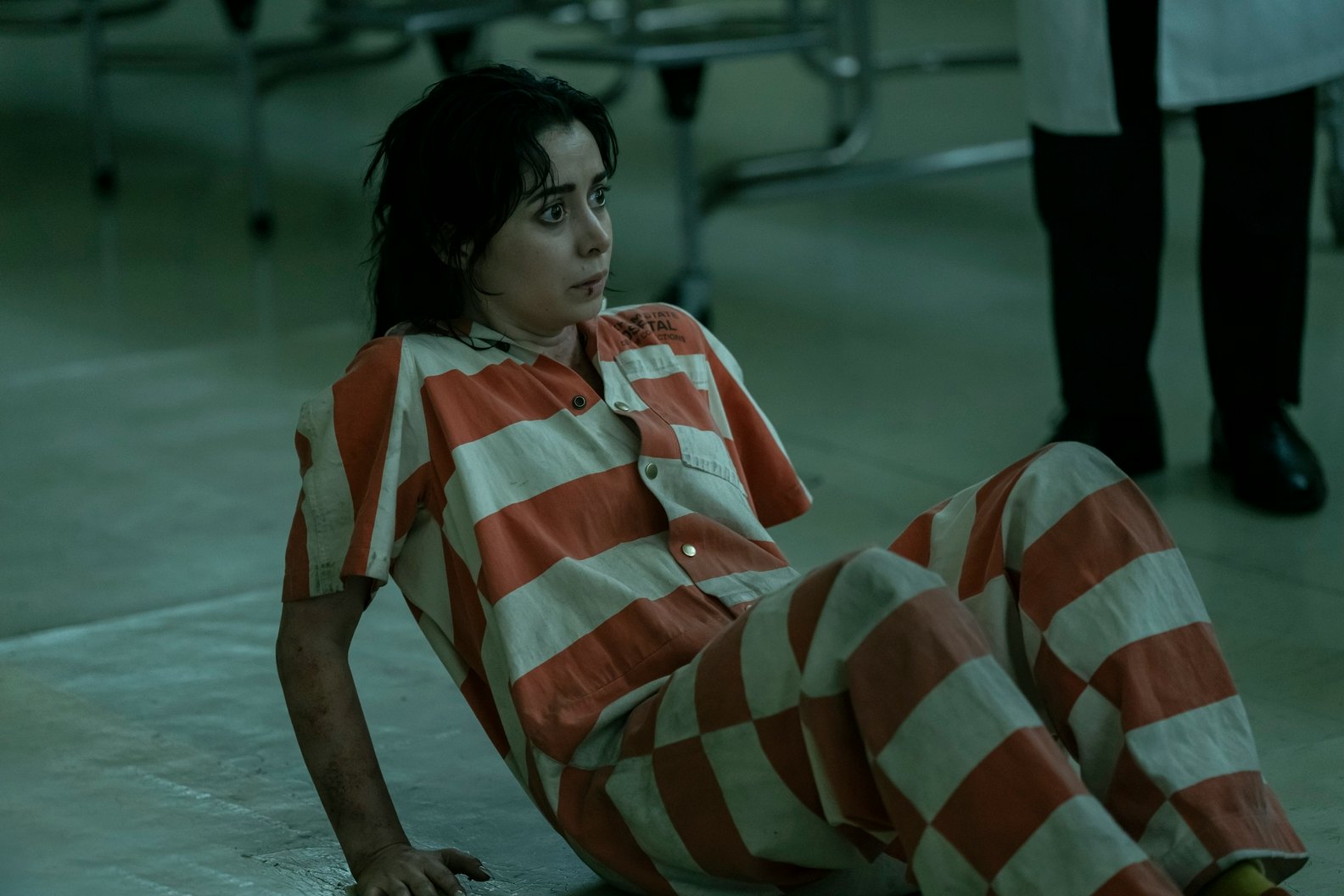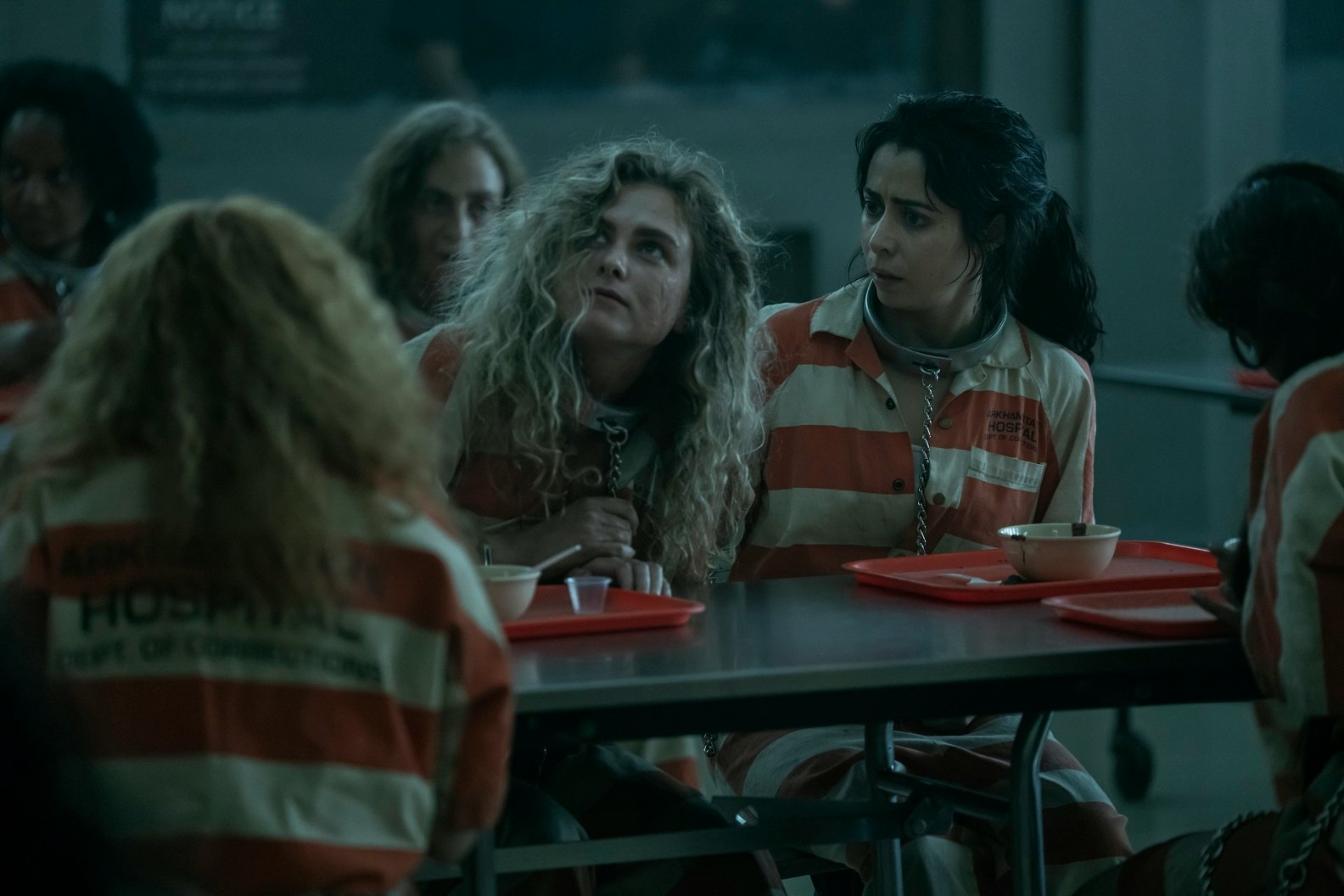
The latest episode of The Penguin isn’t really about the titular character, Oz Cobb (Colin Farrell) at all. Instead, the fourth episode, “Cent’anni” is entirely focused on the show’s breakout star and character, Cristin Milioti as Sofia Falcone. And while the present-tense events of this episode are huge — including a startling ending — the flashbacks of this episode will have longtime fans thinking not just about the backstory of Sofia, but also, about the morality of Batman.
In The Penguin, the famous Arkham Asylum is once again going by its original name, “Arkham State Hospital,” a place that even casual comic book fans know holds only terror and madness. And, as Sofia’s horrifying backstory is made clear in The Penguin, it’s time to ask a question Bat-fans have been mulling over for quite a long time. Is Batman, and the “good guys” of Gotham really doing anyone any favors by throwing people into Arkham? Isn’t this where all their problems come from? Spoilers ahead.
A brief history of Arkham

Although Batman has a long and winding history that started in 1939, Arkham Hospital didn’t appear until October 1974 in issue #258 of the regular ongoing Batman series. The storyline was called “Threat of the Two-Headed Coin!” and involved Two-Face getting taken out of Arkham by a rogue U.S. military official. Because The Penguin Episode 4 is also running during October, you could view this episode as a kind of 50th birthday celebration of Arkham in general. Digging further into DC lore, this episode gives us a new version of the Batman villain Magpie (Marié Botha), who actually first appeared not in a Batman comic, but in Man of Steel #3, written by John Byrne in 1986.
Though Arkham was invented by writer Dennis O'Neil in 1974, and depicted by artists Irv Novick and Dick Giordano, it wasn’t until the 1980s that the more deranged version of the asylum emerged. For that, we can mostly credit writer Len Wein, who also worked with Alan Moore on the original Watchmen.
The version of Arkham Asylum in The Penguin is much closer to Wein’s version than anything from the 1970s, which is also why it's so terrifying. Sofia doesn’t emerge from Arkham better off than she was before, but much worse. This brings up a bigger moral conundrum of the Bat-verse.
The Penguin proves Arkham is the problem

In “Cent’anni,” we learn that Sofia was put into Arkham unjustly. Her father, Carmine (Mark Strong), simply wanted to pin his various murders on her, casting Sofia as a deranged serial killer with the creepy moniker “The Hangman.”
This is Batman villain origin 101: Someone is adjacent to something evil or criminal, gets thrown in an insane asylum, given a snappy nickname, and then, boom, they become a supervillain. As Sofia mentioned in the first episode of The Penguin, “It was humiliating… being turned into a thing... the issue isn’t the guards, it’s the broad treatment of the patients.” Her flashback episode basically doubles down on this premise and elucidates one of the central contradictions in all versions of Batman: The Caped Crusader doesn’t kill any of these villains, but instead, puts them in a pressure cooker where they can turn otherwise less harmful people, like Sofia, into ruthless murders.
Now, Batman doesn’t literally have the keys to Arkham, but he is responsible for putting a lot of people in there. The current Matt Reeves universe seems hyper-aware of this; the final moments of The Batman (2022) put the Riddler (Paul Dano) in a cell right next to a new version of the Joker (Barry Keoghan). All of these people exist in the exact same universe as the titular Penguin in this show, and now, Sofia Falcone.
The fact that Sofia is a product of the unethical treatment of prisons/patients at Arkham isn’t directly Batman’s fault. But, indirectly, it certainly is. Batman can’t function in Gotham City unless he has demented arch-enemies to fight against. And, as The Penguin just proved, Arkham can turn a victim into a villain overnight.







